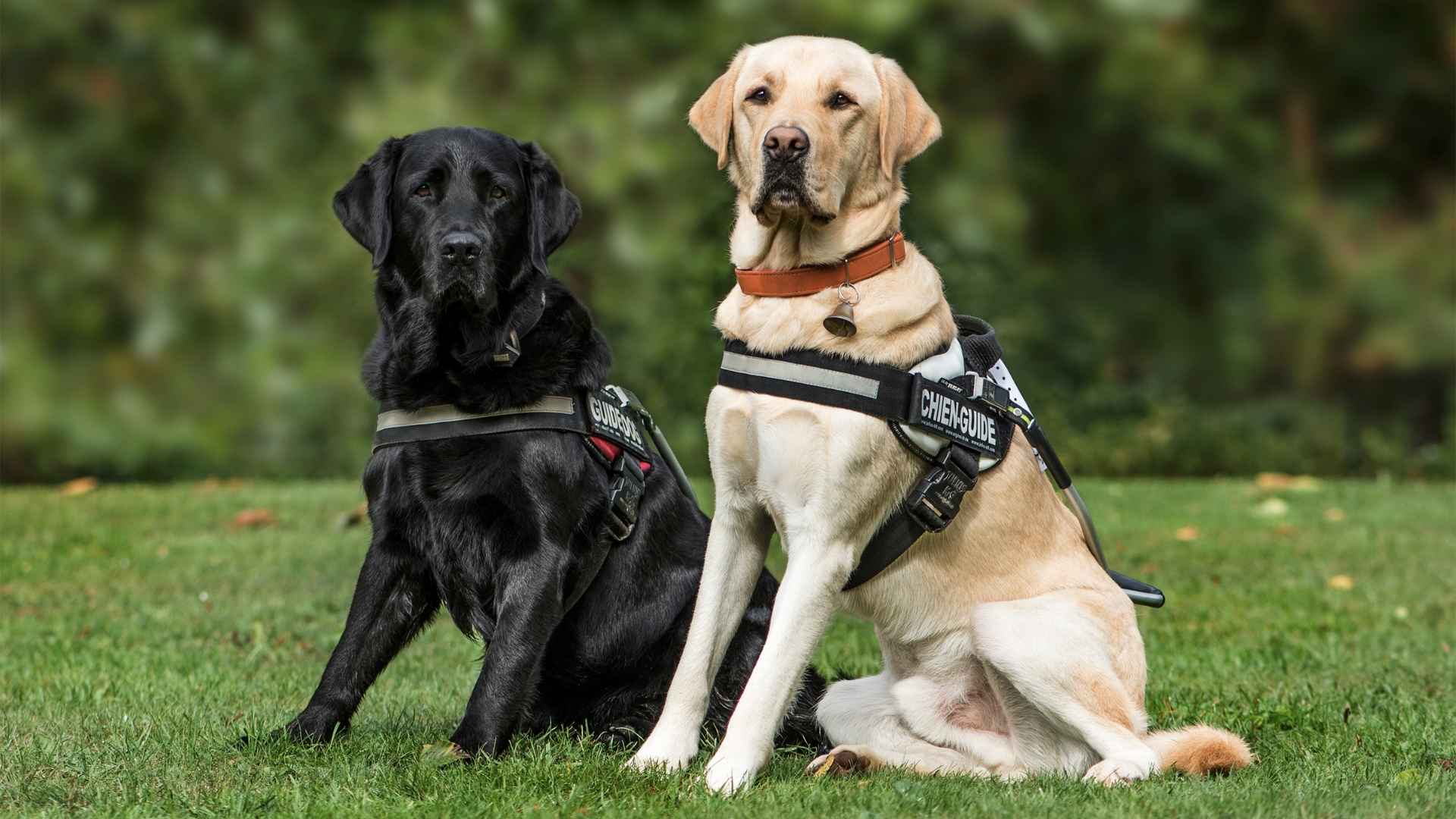Over 500,000 service dogs work in the United States today, helping people with everything from physical disabilities to PTSD.
Behind each of these partnerships is a specially chosen dog with the right mix of brains and heart. Service dogs don’t just help—they transform lives, giving freedom and confidence back to their handlers.
While any breed can potentially become a service dog with proper training, some breeds naturally excel at this important work. Their mix of intelligence, calm nature, and people-focused personality makes them perfect for the job.
Let’s look at seven friendly dog breeds that stand out in the service world—breeds that don’t just work hard but also bring warmth and companionship to the people who need them most.
Friendly Service Dog Breeds
1. Labrador Retriever
Labrador Retrievers consistently rank among the most popular service dog breeds, and for good reason. They have a calm temperament, high intelligence, and an innate ability to read human cues — whether it’s guiding someone with visual impairment or alerting to medical needs, they excel across various service roles.
Easy to Train and Eager to Please
What sets Labs apart is their work ethic combined with a gentle, cooperative nature. They respond quickly to structured training and commands, which makes them ideal for service tasks that require reliability and precision.
Whether working in public or at home, their consistency reduces stress for handlers who depend on them daily.
Deeply Connected to Their People
Labs are not just task-driven — they’re emotionally in tune. That’s why they’re often chosen as emotional support animals.
They can sense changes in mood, body language, and behavior, making them comforting companions for individuals dealing with anxiety, PTSD, or trauma-related conditions.
Well-Rounded and Versatile
Jenna Faria, FSD’s Reproductive and Genetics Manager, “Labs make excellent service dogs due to their intelligence, trainability, friendly nature, and versatility.”
They’re equally dependable in active environments and calm home settings, and their social ease allows them to navigate crowds, unfamiliar spaces, and new people without being reactive or overwhelmed.
2. Golden Retriever
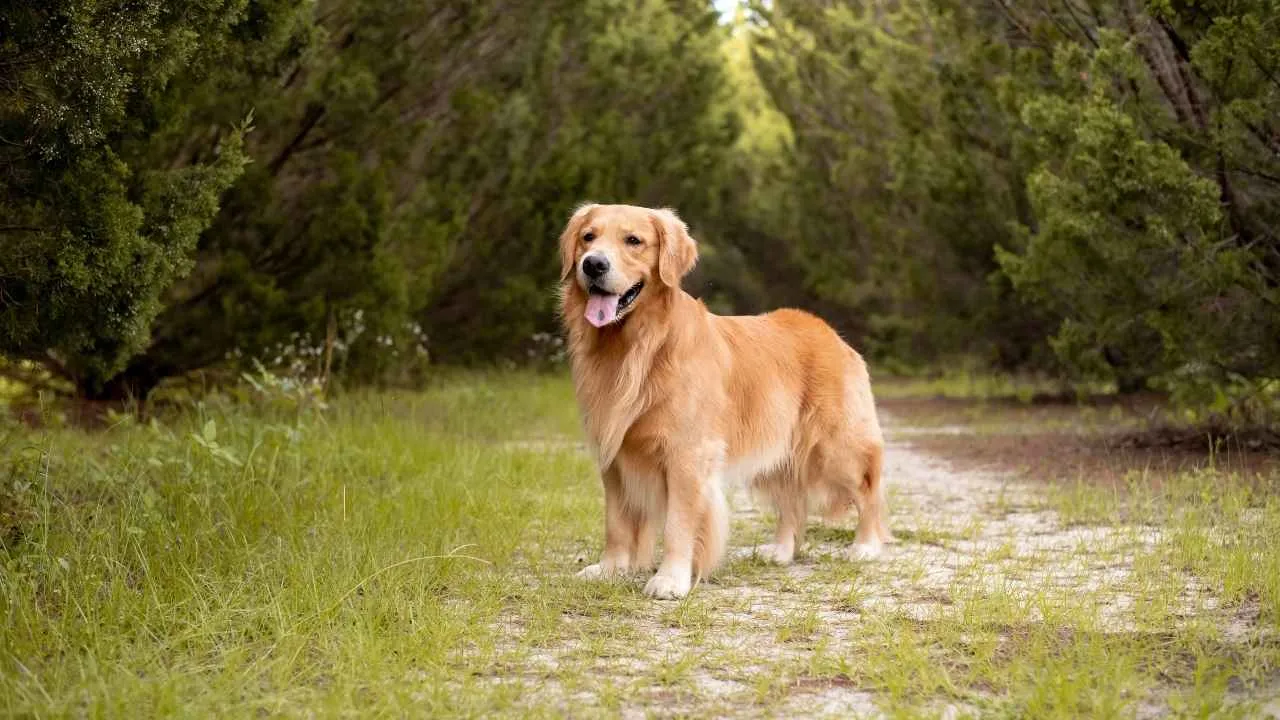
Golden Retrievers are chosen time and again for service work because of their steady nerves and deep-rooted loyalty. Their friendly disposition makes them ideal for interacting with both their handler and the public, without distraction or anxiety in busy environments.
Sharp Minds Meet a Willing Spirit
With an impressive combination of intelligence and eagerness, they’re quick to master commands and adapt to complex routines.
It’s this trainable temperament that allows them to learn specialized tasks — from picking up dropped objects to activating light switches — all while staying focused under pressure.
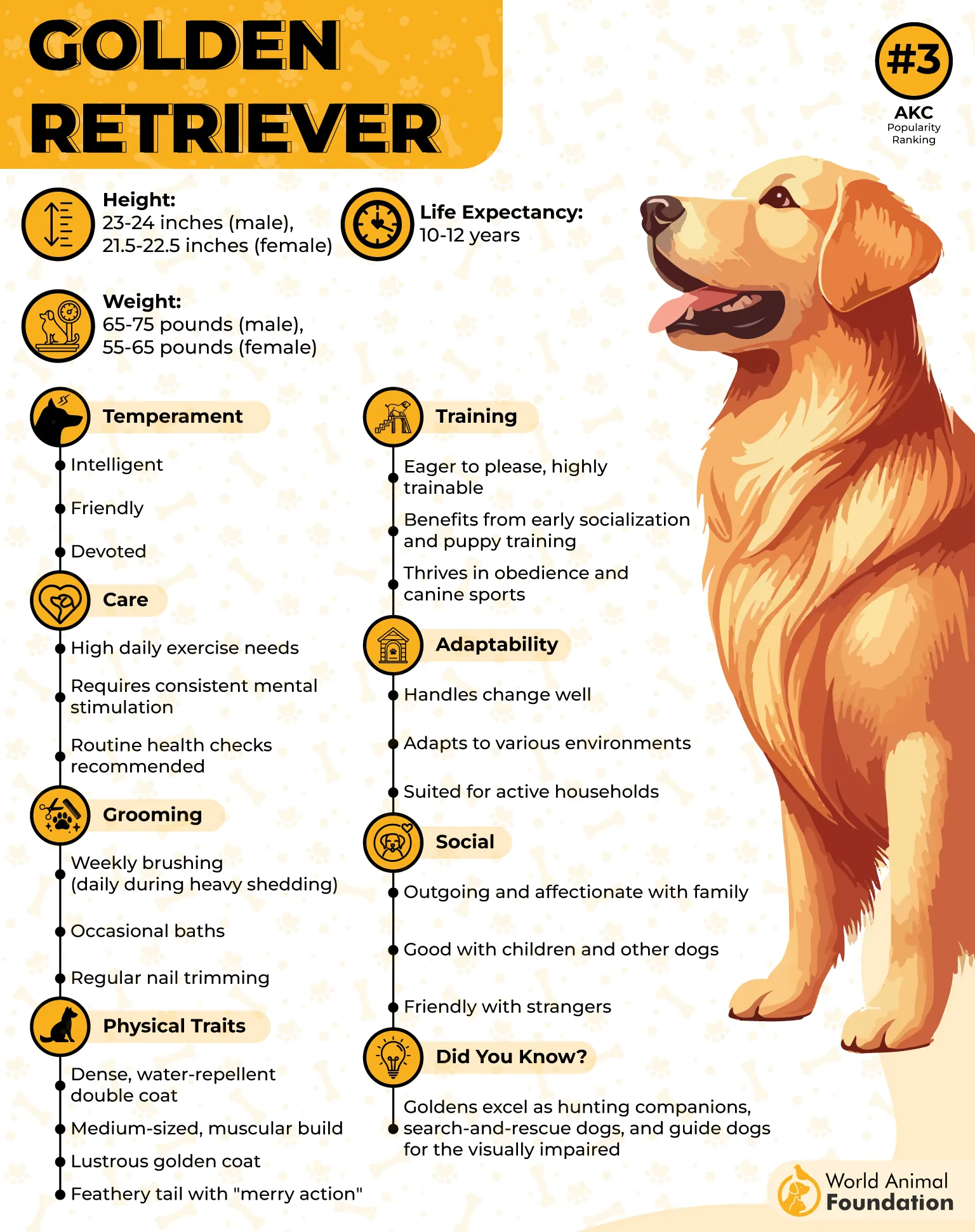
Emotionally Present and Physically Reliable
These dogs naturally form deep bonds with their handlers, allowing them to detect subtle emotional or physiological changes.
That’s why Golden Retrievers often serve as medical alert dogs, noticing shifts in blood sugar, heart rate, or distress. They’re also a natural fit for roles as therapy dogs, offering emotional grounding in hospitals and crisis settings, as per Pettable.
Built for a Range of Life-Changing Tasks
Their physical strength and stamina make them suited for mobility assistance and guide dogs work. They excel in retrieving items on command, delivering medication reminders, and even offering physical support when needed — all with calm focus and precision.
3. Boxer
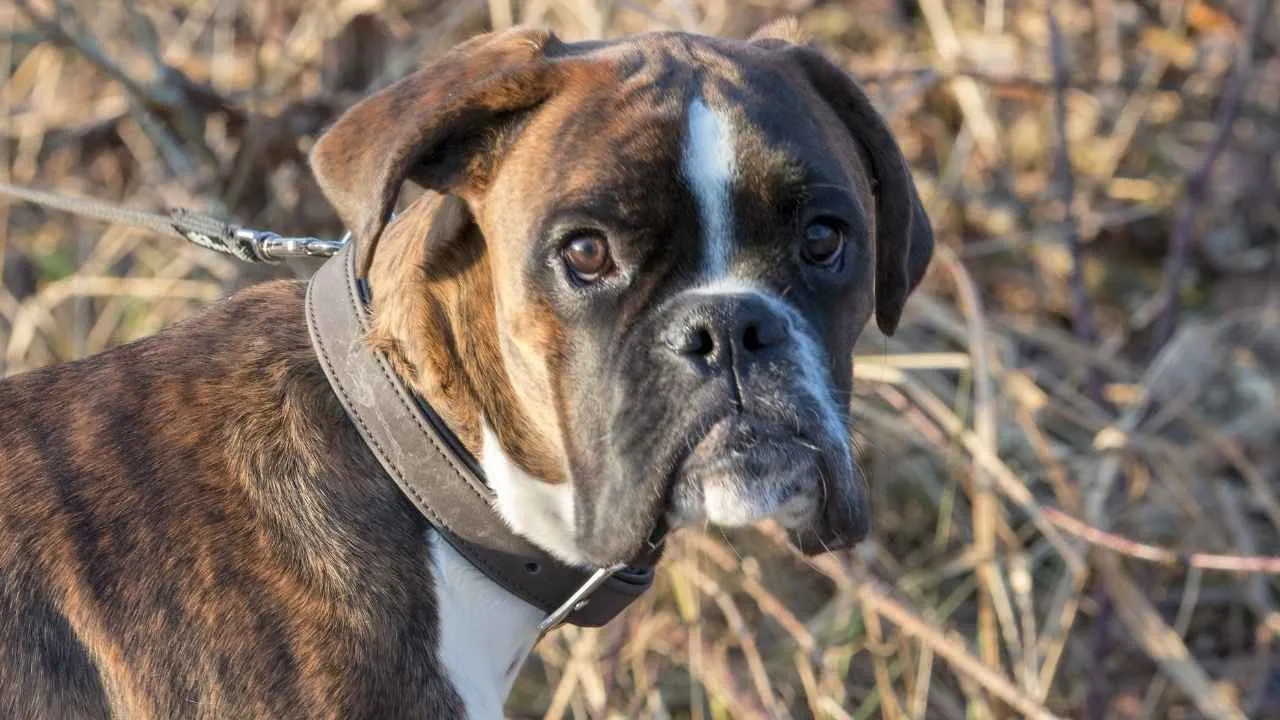
Boxers are uniquely suited for mobility and balance aid thanks to their strong, muscular frame and naturally alert posture. They provide physical support with confidence, helping handlers navigate stairs, stand up, or stay steady during daily tasks — all while remaining calmly attentive to their surroundings.
Instinctively Protective and Responsive
These dogs are incredibly observant. With sharp senses and quick reactions, they’re excellent at danger or intruder notification, often detecting something’s off before their owner does.
But their alertness is balanced with a composed, non-aggressive approach, which is essential for public settings where service animals must remain under control.
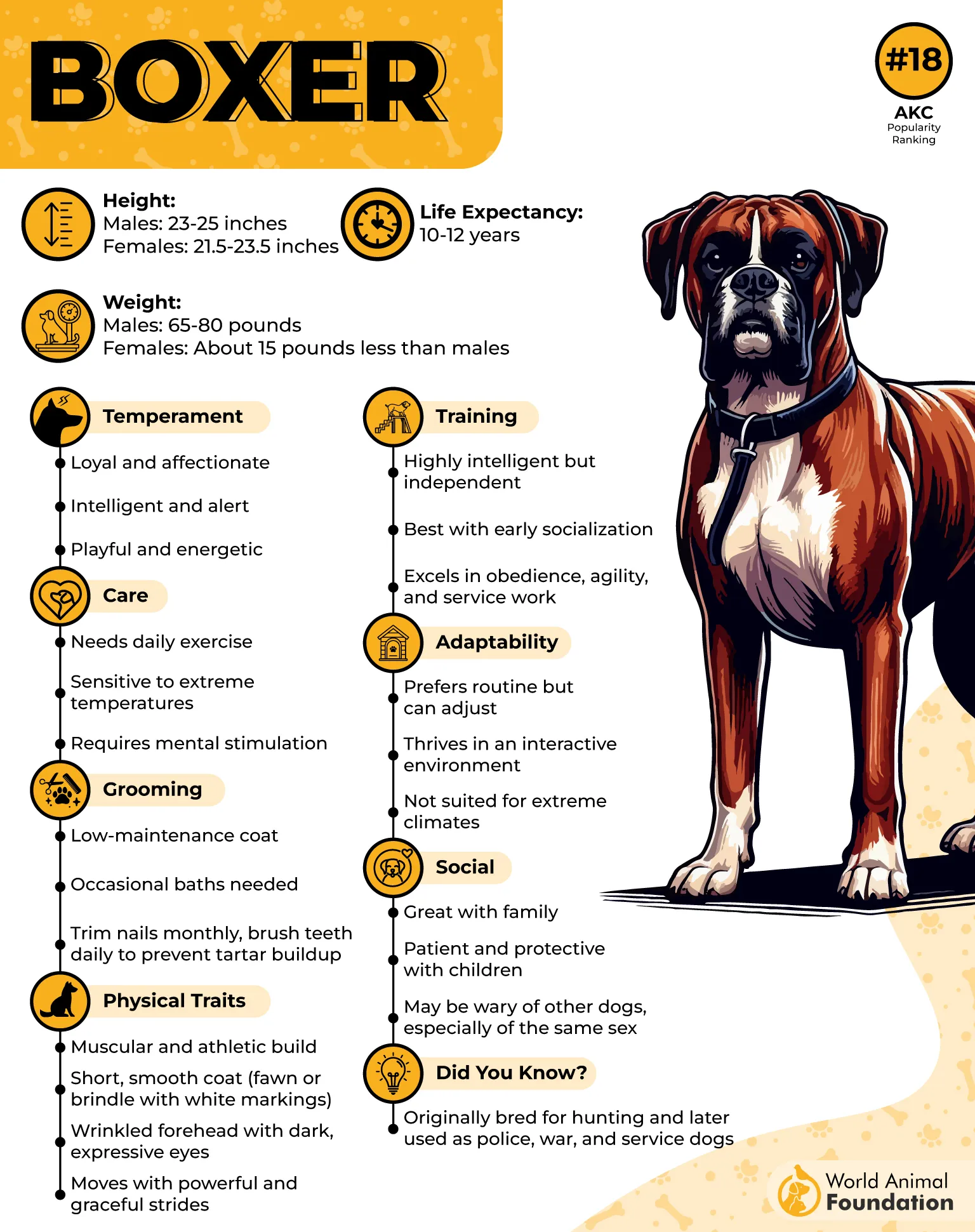
Emotionally Tethered and Grounded
Boxers form incredibly strong bonds with their people. That connection allows them to excel in providing deep pressure therapy — applying their weight with intention during moments of anxiety, panic, or sensory overload. This grounding technique has shown notable effectiveness for those with PTSD or sensory processing disorders.
Not Just Muscle — They’re Mindful Too
While they’re often known for their athleticism, Boxers are also quick learners. Their eagerness to please and responsive nature make them surprisingly good service dogs, especially for individuals needing reliable physical and emotional grounding.
4. Border Collie
Border Collies are best known for their sharp minds and intense focus, which is exactly why they’re commonly trained for complex tasks in service settings.
Their ability to observe, predict, and respond to patterns makes them highly capable in roles where timing and detail matter, such as item retrieval, alerting to sounds, or assisting during sudden physical shifts.
Balance, Mobility, and Mental Engagement
What sets this breed apart is its agility combined with obedience. As balance assistance dogs, Border Collies help handlers maintain posture, shift weight, or avoid falls — especially helpful for individuals with neurological or muscular conditions. They’re not just physically aware, but also incredibly responsive to minor cues and body language.
Brains Over Brawn, Always
Because of their sensitivity and intelligence, many dog trainers choose Border Collies when developing support dogs that require advanced training.
They thrive on routine and precision, which makes them ideal for structured service dog work, provided they get enough stimulation and tasks to prevent boredom.
Respectful Yet Aware of Their Environment
Originally bred for herding, Collies have an instinct to monitor other animals and their surroundings. This awareness translates into calm attentiveness when out in public — a quality that brings peace of mind to handlers who rely on reliable, observant companions.
5. Great Dane
Great Danes are among the most reliable mobility support service dogs, thanks to their impressive size and steady build. But their role extends far beyond acting as a physical anchor.
These dogs offer emotional comfort just by being present — their calm energy and steady companionship have an almost grounding effect on handlers facing both physical and psychological challenges.
Big Frame, Bigger Heart
While towering in stature, Great Danes are known for their affectionate nature and low-maintenance lifestyle.
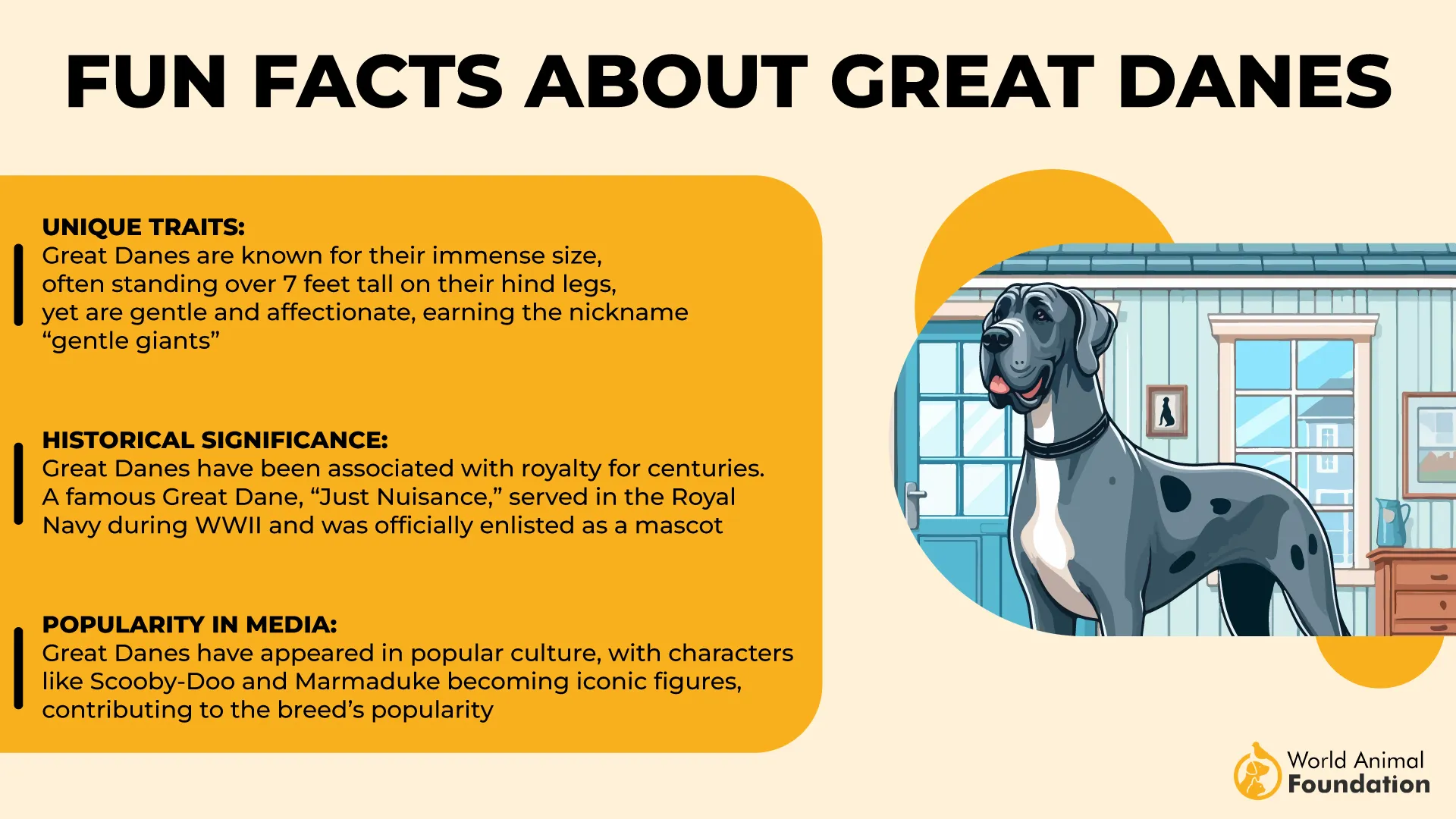
They don’t demand extensive exercise, which is a major advantage for those with mobility limitations. A couple of short walks and mental stimulation are usually enough to keep them content.
Emotionally Tuned and Adaptively Smart
Though they aren’t the top of the charts in traditional obedience rankings, Great Danes excel in adaptive intelligence, as mentioned in Certapet. They respond intuitively to their handler’s needs — picking up on emotional shifts, routines, and new environments without fuss.
Loyal to the Core
What makes them truly exceptional service companions is their loyalty. They bond closely with their handler while still remaining friendly and gentle with strangers. Their loving temperament, combined with a calm demeanor, makes them ideal in public settings where reliability and non-reactivity are key.
6. Bernese Mountain Dog
Bernese Mountain Dogs are solidly built, both in body and temperament, which makes them naturally suited for mobility and balance support tasks.
Their large frame and calm energy allow them to provide steady assistance without being easily distracted or startled. For individuals who need physical support when walking, standing, or navigating uneven surfaces, their size becomes a helpful asset.
Emotionally In Tune with Their Handler
What’s remarkable about Berners is how quickly they attune themselves to emotional shifts in their environment. They’re not hyper or overly sensitive — instead, they respond with a quiet, comforting presence.
That makes them valuable in tasks related to deep pressure therapy, emotional calming, or non-verbal reassurance for those with PTSD, anxiety, or autism.
Dependable Temperament, Patient Learning
They’re not the fastest learners compared to high-energy breeds, but what they lack in speed, they make up for in consistency. Berners are known for being extremely reliable once trained, and they’re less likely to deviate from commands under pressure.
Public-Friendly and Easy to Handle
Despite their size, they are extremely approachable — strangers are often drawn to their warm expression and gentle manner. That friendliness makes them well-received in public spaces and a comforting presence for the handler without drawing excessive attention.
7. Pomeranian
While not built for physical tasks, Pomeranians excel as emotional support companions, particularly for individuals with anxiety, PTSD, or mild depression.
Their small size makes them ideal for indoor living, and they form intense, close bonds with their handler, often picking up on mood shifts before any visible signs appear.
Natural Alert Dogs for Sound and Medical Cues
One of the breed’s standout qualities is its vigilance. Pomeranians are frequently trained to alert to medical cues like low blood sugar, asthma attacks, or oncoming migraines.
Their acute hearing also makes them useful for sound-based notifications such as doorbells, alarms, or even babies crying — all without needing extensive physical strength.
Task-Specific Intelligence and Focus
Though they’re often underestimated due to their fluffy appearance, Pomeranians are highly intelligent and capable of learning complex tasks when trained by professionals.
They’re particularly effective in roles where carrying items, balance support, or deep pressure therapy aren’t required, but consistency and awareness are crucial.
Discreet for Public Access and Travel
Their size and temperament make them ideal for handlers who need a discreet service companion in public or while traveling.
They’re easy to carry, rarely require physical control in crowds, and are well-suited for environments like classrooms, airports, or therapy centers where space and noise levels matter.
Conclusion
Service dogs change lives—it’s that simple. From mighty Great Danes to tiny Pomeranians, these specially trained companions help people face challenges most of us never think about. Not all dogs have what it takes to be great service dogs.
The breeds we’ve explored combine the right mix of smarts, heart, and training ability to truly make a difference. Whether helping with mobility, alerting to medical issues, or providing emotional support for those with physical or mental disabilities, these furry heroes work tirelessly.
While these seven represent the most common service dog breeds, remember that with proper training, many dogs can learn service dog tasks. What matters most is finding the right match—a dog whose abilities and temperament perfectly fit your specific needs. When that happens, the bond formed isn’t just helpful—it’s life-changing.


